Entry Database : PDB / ID : 6xr7Title Abl isoform 1b inactive1 state Tyrosine-protein kinase ABL1 Keywords / Function / homology Function Domain/homology Component
/ / / / / / / / / / / / / / / / / / / / / / / / / / / / / / / / / / / / / / / / / / / / / / / / / / / / / / / / / / / / / / / / / / / / / / / / / / / / / / / / / / / / / / / / / / / / / / / / / / / / / / / / / / / / / / / / / / / / / / / / / / / / / / / / / / / / / / / / / / / / / / / / / / / / / / Biological species Homo sapiens (human)Method / Authors Xie, T. / Saleh, T. / Rossi, P. / Kalodimos, C.G. Funding support 1items Organization Grant number Country National Institutes of Health/National Institute of General Medical Sciences (NIH/NIGMS) 5R35GM122462-04
Journal : Science / Year : 2020Title : Conformational states dynamically populated by a kinase determine its function.Authors : Xie, T. / Saleh, T. / Rossi, P. / Kalodimos, C.G. History Deposition Jul 11, 2020 Deposition site / Processing site Revision 1.0 Oct 7, 2020 Provider / Type Revision 1.1 Oct 14, 2020 Group / Category / Item / _citation.titleRevision 1.2 Oct 21, 2020 Group / Category / Item Revision 1.3 Jun 14, 2023 Group / Other / Category / pdbx_database_statusItem / _database_2.pdbx_database_accession / _pdbx_database_status.status_code_nmr_dataRevision 1.4 May 15, 2024 Group / Database references / Category / chem_comp_bond / database_2 / Item
Show all Show less
 Open data
Open data Basic information
Basic information Components
Components Keywords
Keywords Function and homology information
Function and homology information Homo sapiens (human)
Homo sapiens (human) Authors
Authors Citation
Citation Journal: Science / Year: 2020
Journal: Science / Year: 2020 Structure visualization
Structure visualization Molmil
Molmil Jmol/JSmol
Jmol/JSmol Downloads & links
Downloads & links Download
Download 6xr7.cif.gz
6xr7.cif.gz PDBx/mmCIF format
PDBx/mmCIF format pdb6xr7.ent.gz
pdb6xr7.ent.gz PDB format
PDB format 6xr7.json.gz
6xr7.json.gz PDBx/mmJSON format
PDBx/mmJSON format Other downloads
Other downloads 6xr7_validation.pdf.gz
6xr7_validation.pdf.gz wwPDB validaton report
wwPDB validaton report 6xr7_full_validation.pdf.gz
6xr7_full_validation.pdf.gz 6xr7_validation.xml.gz
6xr7_validation.xml.gz 6xr7_validation.cif.gz
6xr7_validation.cif.gz https://data.pdbj.org/pub/pdb/validation_reports/xr/6xr7
https://data.pdbj.org/pub/pdb/validation_reports/xr/6xr7 ftp://data.pdbj.org/pub/pdb/validation_reports/xr/6xr7
ftp://data.pdbj.org/pub/pdb/validation_reports/xr/6xr7

 Links
Links Assembly
Assembly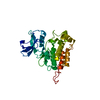
 Components
Components Homo sapiens (human) / Gene: ABL1, ABL, JTK7 / Production host:
Homo sapiens (human) / Gene: ABL1, ABL, JTK7 / Production host: 
 Sample preparation
Sample preparation Processing
Processing Movie
Movie Controller
Controller







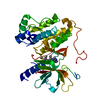
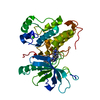
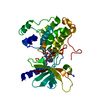

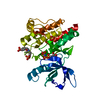
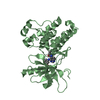
 PDBj
PDBj






 CYANA
CYANA